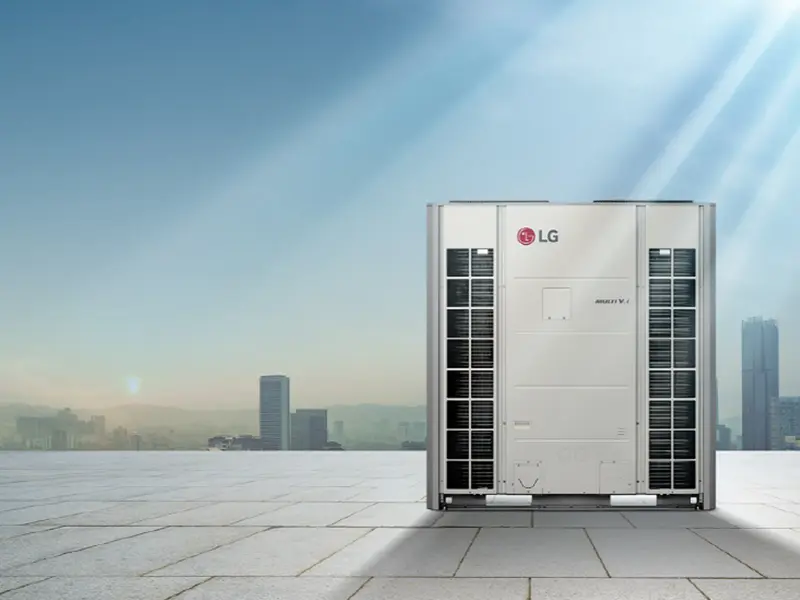Introduction
Variable Refrigerant Flow (VRF) systems represent a significant advancement in the realm of climate control technology, offering unparalleled efficiency and adaptability in heating and cooling large buildings. These systems provide precision comfort control, allowing for individual temperature settings in different zones or rooms. This blog delves into the mechanics of VRF systems, their advantages, and highlights innovative features from leading brands like LG that are setting new standards in the industry.
How VRF Systems Work
VRF technology utilizes refrigerant as the cooling and heating medium, which is conditioned by a single outdoor condensing unit and circulated within the building to multiple indoor units. The system consists of a network of small air handlers that can be individually controlled and thus provide personalized comfort while operating at varying speeds.
VRF systems are equipped with one or multiple compressors that adjust the refrigerant flow based on the demand of individual indoor units. This ability to control the amount of refrigerant flowing to each air handler makes VRF systems extremely efficient, reducing energy consumption and costs.
Key Components of a VRF System
- Outdoor Units: These contain the compressors and condenser coil and are responsible for initiating the refrigerant cycle.
- Indoor Units: Available in various forms such as wall-mounted, ceiling-mounted, and floor-standing units, which can be individually controlled.
- Refrigerant Lines: Connect the outdoor and indoor units, circulating the refrigerant through the system.
- Control Systems: Allow for precise temperature control of each indoor unit, enhancing user comfort and system efficiency.
Benefits of VRF Systems
Energy Efficiency: By operating at varying speeds, VRF systems use only the necessary amount of energy to maintain comfort and do not waste electricity, making them more energy-efficient than traditional systems.
Design Flexibility: The modular design of VRF systems allows for a variety of indoor unit styles and placements, which can be customized based on the specific needs and aesthetics of the building.
Quiet Operation: VRF systems are known for their quiet operation, making them ideal for environments where noise is a concern, such as in hospitals and schools.
Integrating LG VRF Systems: A Leap in Innovation
LG VRF systems are at the forefront of this technology, incorporating several unique features that enhance their appeal and functionality:
Black Fin Coating: The outdoor units come with a special Black Fin coating that offers superior corrosion resistance, ensuring longevity and consistent performance even in harsh environmental conditions.
Auto Dust Removal: Some models feature an auto dust removal function that maintains the efficiency and effectiveness of the system by automatically cleaning the dust accumulation, which can typically degrade performance.
Dual Sensing Control: This innovative feature detects both temperature and humidity conditions in each room, adjusting settings for optimal comfort without overcooling or overheating.
Biometric Technology Fan: LG’s cutting-edge biometric technology in fans optimizes airflow patterns, ensuring efficient operation and evenly distributed air throughout the space.
Aesthetically Pleasing Indoor Units: LG VRF systems include slim and stylish indoor unit designs, such as round cassettes and slim 1-way cassettes that fit seamlessly into a 6-inch ceiling space, preserving the aesthetic integrity of the interior design.
Centralized Remote Control and BMS Integration: LG VRF systems can be integrated with Building Management Systems (BMS) for centralized control, making it easier to manage large-scale installations from a single point, enhancing convenience and efficiency.
Conclusion
VRF systems have transformed the way large buildings are cooled and heated, offering a combination of efficiency, customization, and control that traditional systems cannot match. With advanced features from LG, including robust environmental protections, innovative control technologies, and sleek designs, LG VRF systems provide a compelling solution for modern climate control needs. Whether upgrading an existing building or designing a new one, considering a VRF system, particularly an LG model with its myriad benefits, is a wise choice for sustainable and effective climate management.



